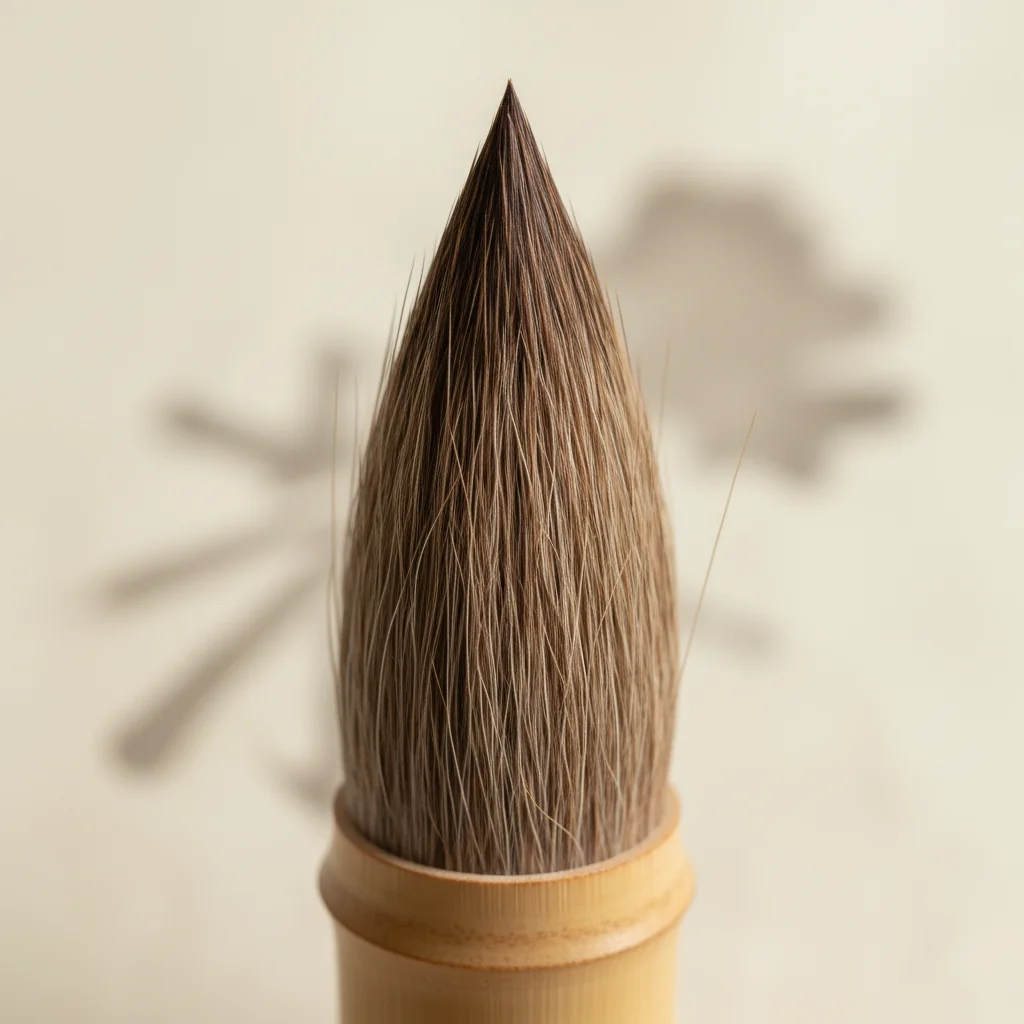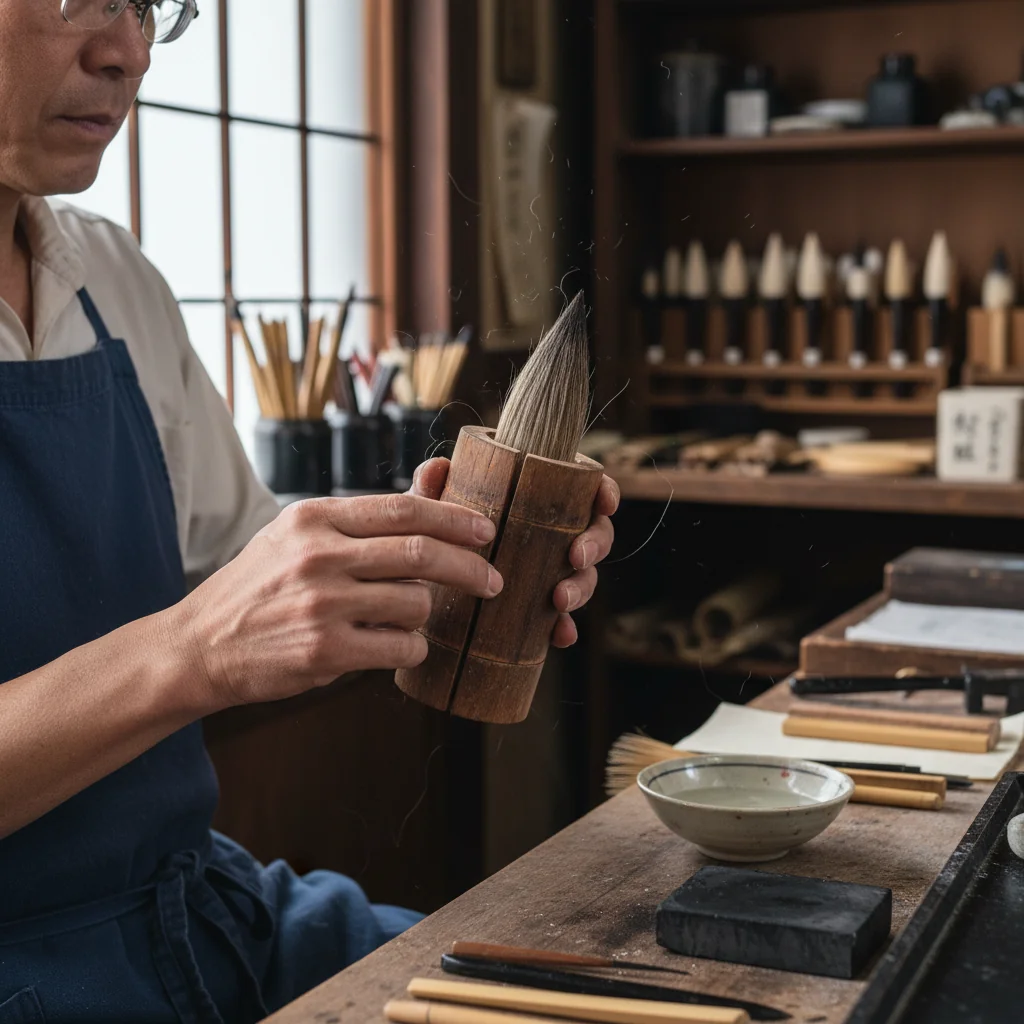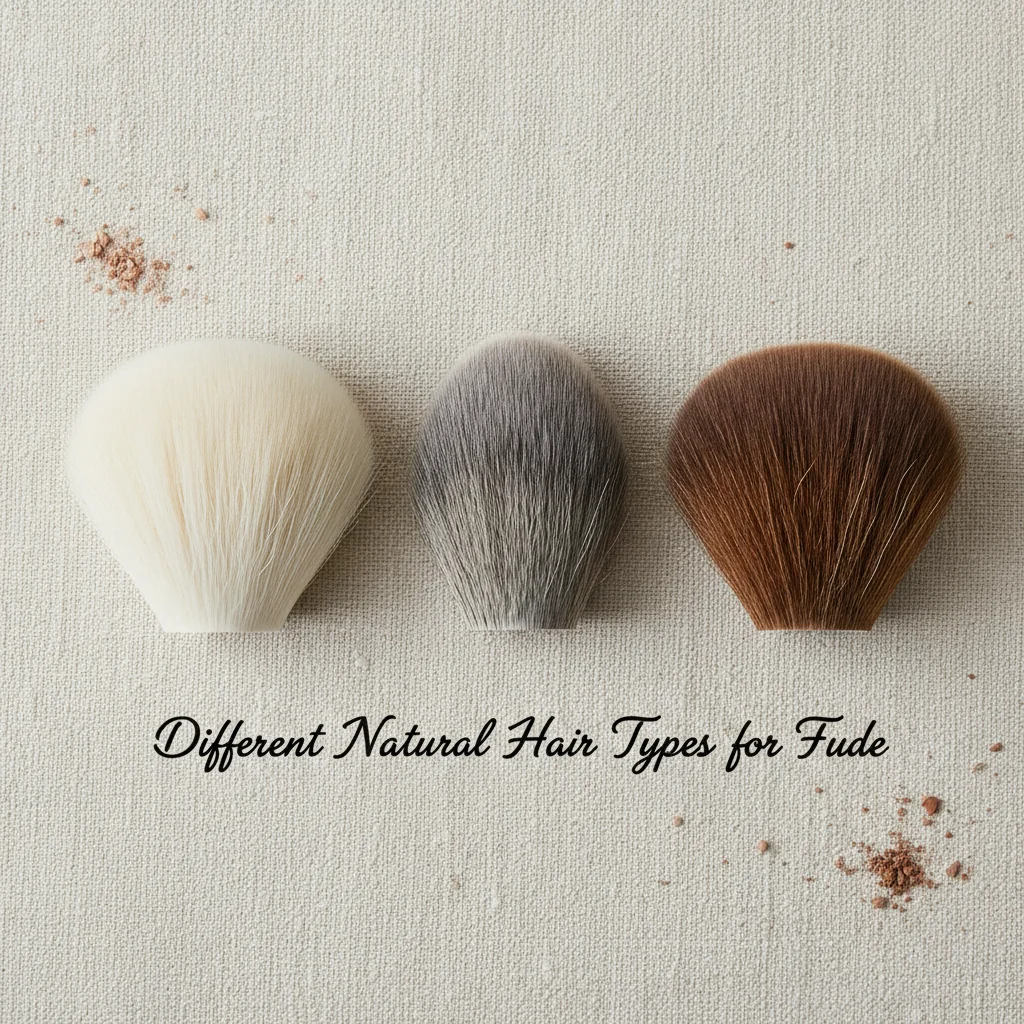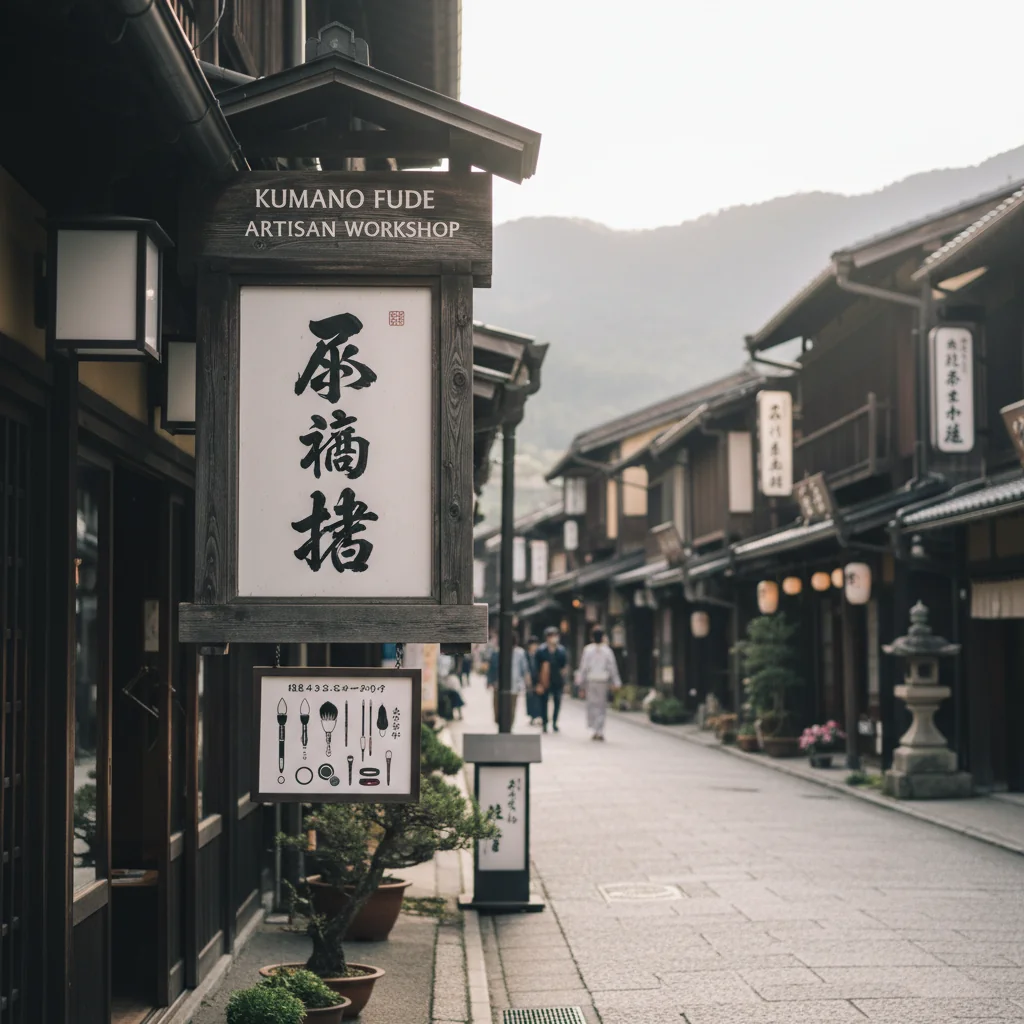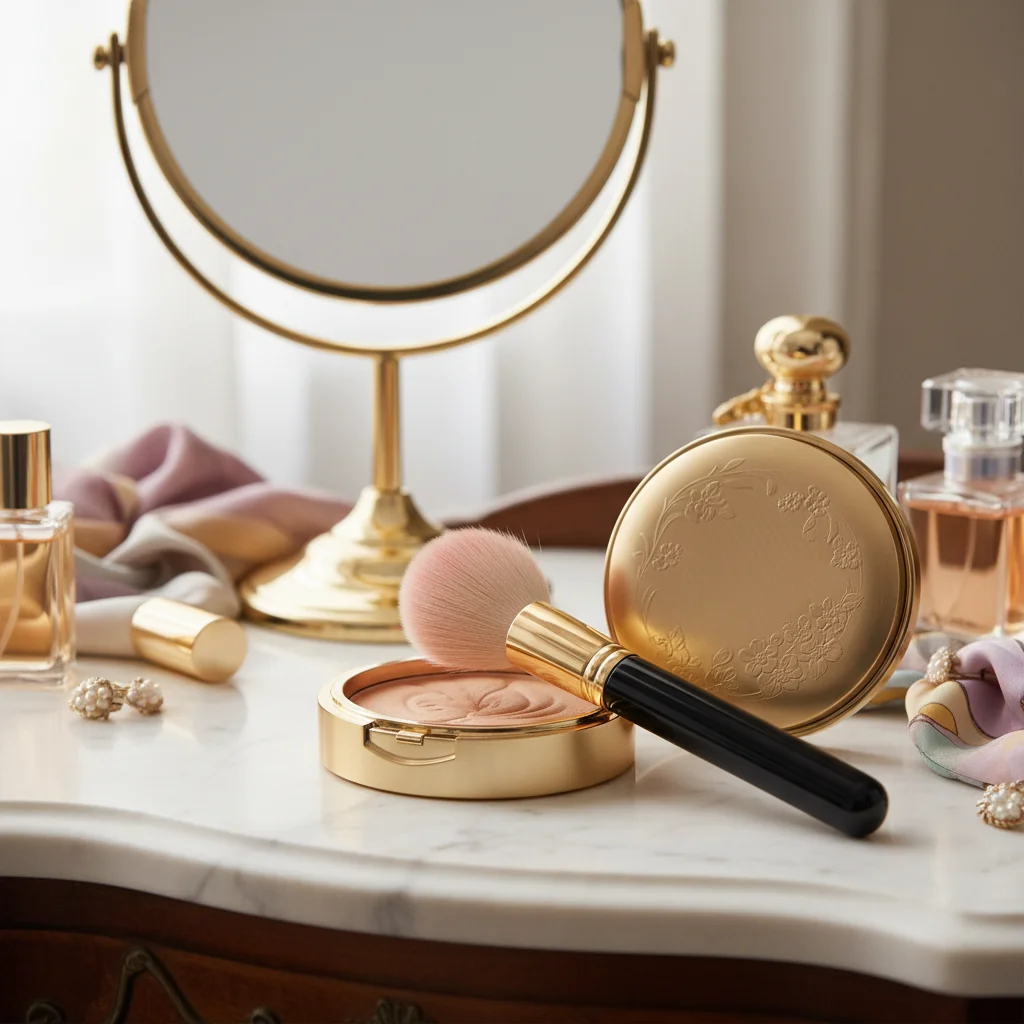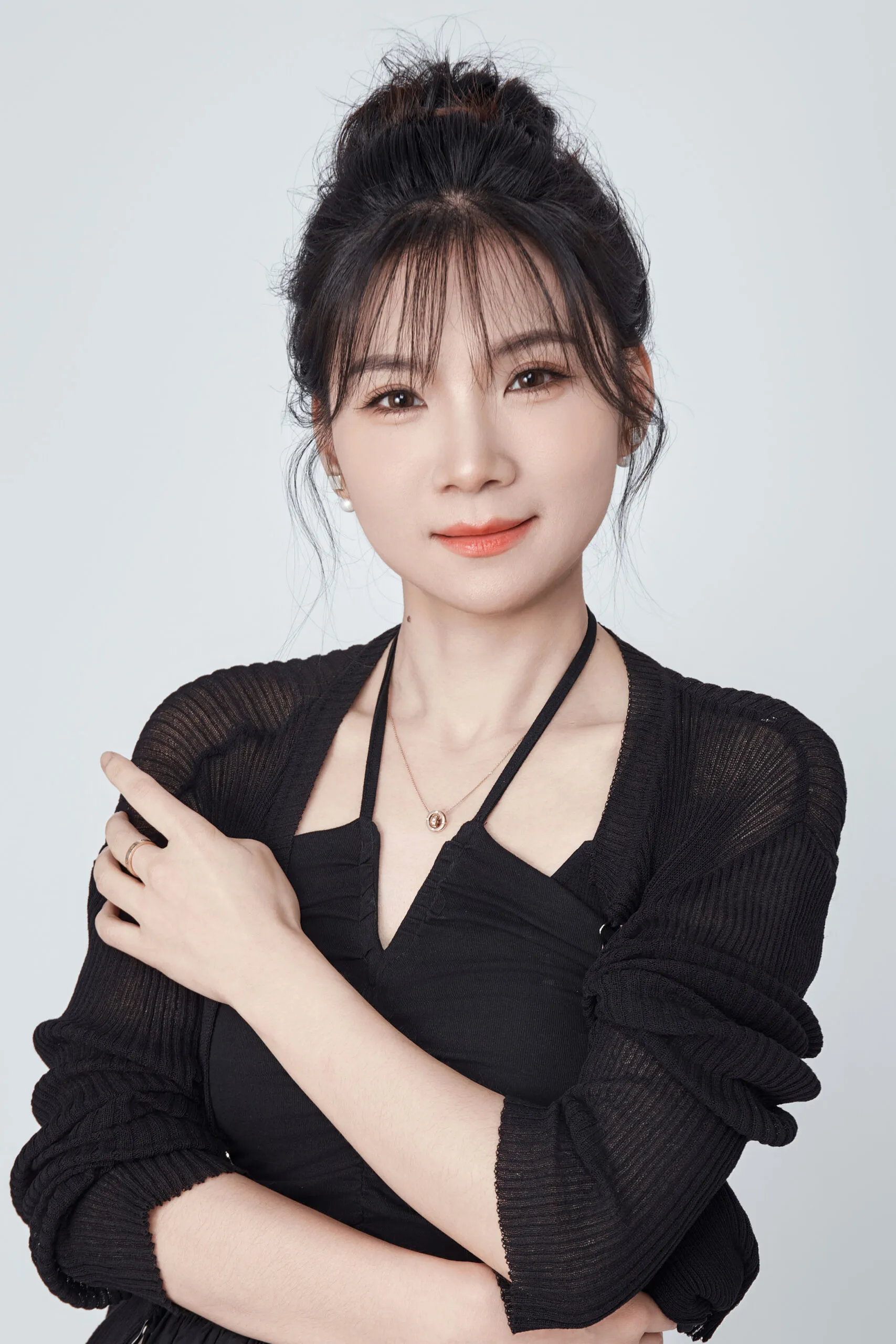You see the high price of Japanese fude and wonder if it’s just hype. Sourcing them feels risky, and you’re not sure how to explain the cost to your customers.
Japanese makeup brushes are expensive because they are handmade by skilled artisans1 using uncut natural hair tips. This labor-intensive process, combined with premium materials, traditional craft standards, and limited production capacity in hubs like Kumano, drives up the cost but delivers superior softness and performance.
Understanding these costs isn’t just for curiosity. As a brand owner, it’s critical for making smart sourcing and pricing decisions. Having spent years on the factory floor before starting Brushino, I’ve seen firsthand what goes into these brushes. Let’s break down exactly where your money goes, so you can decide if fude is the right strategic fit for your brand.
All high-end Japanese brushes are made from rare squirrel hair.False
While squirrel hair is used for luxury brushes, high-grade goat hair is far more common and versatile, forming the backbone of most fude collections.
The tips of authentic Japanese fude are never cut during production.True
This is a core principle of fude making. Preserving the natural, tapered hair tip is what makes the brushes incredibly soft and excellent at blending powder products.
What specific craftsmanship steps make Japanese fude cost more than mass-produced brushes?
You hear "handmade," but what does that actually mean for your bottom line? Without knowing the specific steps, you can’t justify the premium price to your partners or customers.
Japanese fude use uncut hair tips that are hand-sorted, bundled, and shaped to preserve their natural softness. Each manual step adds significant labor hours and requires years of artisan skill, directly increasing the unit cost compared to machine-trimmed, mass-produced brushes that are made in seconds.
When I walk through a factory, the difference between a fude production line and a standard one is night and day. A mass-produced brush is made for speed. Machines bundle the hair, and a cutter trims the head into shape. It’s fast and cheap, but it creates blunt, scratchy ends. The fude process is the complete opposite; it’s all about preserving the natural quality of the hair.
The Art of Uncut Hair Tips
The most crucial step is selecting and aligning the hairs. Artisans meticulously sort raw fibers, removing any that are broken or imperfect. Then, they painstakingly tap the bundle on a surface to align every single hair tip perfectly. This process, called kesenami, ensures that only the softest, natural ends will touch the skin. No cutting is ever involved.
Hand-Shaping vs. Machine-Trimming
Once aligned, the hair bundle is placed into a small wooden mold called a koma. The artisan uses their fingers to gently shape the brush head—whether it’s a dome, a taper, or a flat top. This manual shaping creates a density and form that machines can’t replicate. This step alone requires immense skill and time, directly contributing to the higher cost. A machine can churn out hundreds of trimmed brushes in an hour, while a single artisan might spend that time perfecting just a few fude heads.
Machine-trimmed brushes can be made just as soft as handmade fude with modern technology.False
No matter how fine the cut, a trimmed hair has a blunt edge. The natural, uncut taper of a fude hair will always be softer and gentler on the skin.
The process of aligning hair tips without cutting is a signature skill in fude making.True
This technique is fundamental to fude quality. It ensures the brush delivers the softest possible application and superior blending performance, especially with powders.
How do hair types and grades affect cost and performance?
Goat, squirrel, saikoho… the terminology is confusing. Choosing the wrong hair for your brush line can lead to poor performance, unhappy customers, and a wasted investment.
Higher grades of goat hair and rarer types of squirrel hair are scarcer and softer, which drives up material costs significantly. Brands blend fibers to achieve specific performance, but the core material quality, ferrule alloy, and handle wood all add up, directly impacting the final price.
The "Bill of Materials2," or BOM, is something I deal with every day. It’s the list of every single component in a product, and for fude, the hair is the biggest cost driver. But it’s not just about choosing "goat hair." The grade matters immensely.
The Goat Hair Hierarchy
Goat hair is the workhorse of the fude world. It has a great balance of softness, durability, and powder pickup. But there are levels. Basic goat hair is good, but grades like sokoho and saikoho are softer, finer, and come from specific parts of the goat, making them rarer and more expensive. Think of it like the difference between standard cotton and Egyptian cotton.
The Luxury of Squirrel and Blends
Squirrel hair is the pinnacle of softness. It’s incredibly delicate and perfect for applying finishing powders or a sheer wash of color without disturbing makeup underneath. Because it’s so fine and less abundant, it’s one of the most expensive materials. Many brands use blends—for example, mixing a small amount of squirrel with goat hair—to improve softness while managing costs.
Here’s a simple breakdown to help you decide:
| Hair Type | Typical Use | Softness | Pickup | Relative Cost |
|---|---|---|---|---|
| Goat (Sokoho) | Powder, Blush, Bronzer | High | Excellent | Medium |
| Goat (Saikoho) | Finishing Powder, Blush | Very High | Good | High |
| Grey Squirrel | Delicate Powders, Highlight | Ultra-Soft | Sheer | Very High |
| Horse | Eyeliner, Eyebrow | Firm | Strong | Low-Medium |
| Water Badger | Concealer, Foundation | Resilient | Strong | High |
| Blends | Varies | Varies | Varies | Medium-High |
All natural hair brushes are certified cruelty-free.False
This is a common misconception. While many manufacturers source hair as a byproduct of other industries, achieving a 'cruelty-free' certification requires a strict, verifiable supply chain that is not standard for all natural hair.
Squirrel hair is generally too delicate for heavy cream or liquid products.True
Its fine structure lacks the resilience to blend thick formulas and can be easily damaged by the frequent, intensive washing that creams and liquids require.
Does Kumano’s artisan hub raise prices, and how does it affect quality and capacity?
You’ve probably heard of Kumano3, but you’re wondering if a town’s reputation is just a marketing story. And more importantly, can one small region handle your brand’s production needs?
Yes, Kumano’s ecosystem is a major price driver. The town produces around 80% of Japan’s brushes, which concentrates expertise and ensures high quality. However, this also limits scalable output and keeps wages high, impacting cost, capacity, and lead times for B2B buyers.
From a sourcing perspective, a "craft cluster4" like Kumano is a double-edged sword. I’ve worked with factories both inside and outside these types of specialized zones, and the difference is clear.
The Power of a Craft Cluster
In Kumano, generations of families have been making brushes. The entire town is an ecosystem of skilled artisans, raw material suppliers, and toolmakers. This deep-rooted knowledge base is why the quality is so consistent and why the Japanese government designated it a "Traditional Craft Industry" back in 1975. When you source from Kumano, you are buying into a proven system of quality control that is almost impossible to replicate elsewhere.
The Downside: Concentrated Risk and Cost
However, this concentration creates a bottleneck. With roughly 80% of domestic production in one place, there is no low-cost alternative within Japan. Wages are higher because there is a limited pool of master artisans. For a brand owner, this means you have to plan for higher costs and longer lead times. If a popular influencer makes fude go viral, the demand spike can overwhelm the town’s capacity, and production schedules can get pushed back by months. I always advise my clients to build a buffer into their launch timelines when sourcing from highly specialized regions like this.
Kumano is the only city in Japan that produces high-quality makeup brushes.False
While Kumano is the undisputed center of the fude industry, other skilled artisans and smaller workshops exist in other parts of Japan. However, none have the scale or historical depth of Kumano.
Kumano accounts for approximately 80% of all makeup brush production in Japan.True
This statistic is widely confirmed by the Kumano government and industry sources, highlighting its dominant role and explaining the concentration of skill and risk in one region.
What are the price ranges, and when should B2B brands use Japanese fude?
You know they’re expensive, but what’s a realistic price to expect? More importantly, are they even the right choice for your brand’s specific product mix and target customer?
Entry-level artisan fude can start around $25–$35 retail for a small eyeshadow brush. Brands should strategically spec fude for "hero" products, especially powders, where the superior finish justifies a premium price and elevates the entire brand’s perception of quality.
My advice to brand founders like you is always to be strategic. You don’t need to replace your entire brush line with fude to make an impact. It’s about surgical precision.
Understanding the Price Tiers
Use retail benchmarks as your guide. A classic eyeshadow brush like Hakuhodo’s J142 retails for around $29 (as of 2025). This is a great reference for an entry-level, authentic fude. From there, prices climb quickly. Face brushes, especially those made with premium saikoho goat or squirrel hair, can easily command retail prices of $75, $150, or even more. Knowing these tiers helps you plan your own MSRP and wholesale pricing strategy.
The Strategic "Hero" Brush
Instead of a full set, focus on one or two "hero" brushes. A fluffy powder brush or a perfectly shaped blush brush is where fude truly shines. The performance difference with powder products is something your customers will feel and see immediately. It makes your powders apply like silk. This single, amazing experience can lift the perceived value of your entire brand. It shows you invest in quality where it matters most.
When Fude is Not the Best Choice
Let’s be honest: fude is not the best tool for every job. For applying a thick, full-coverage liquid foundation, a dense synthetic brush is often more effective, easier to clean, and more durable. Fude is for artistry, blending, and creating a flawless finish. Use them to add a layer of luxury and performance to your line, not for heavy-duty tasks. This targeted approach protects your margins and makes the fude brushes you do offer feel even more special.
A prestige brand must replace its entire brush line with fude to be credible.False
This is an expensive and often ineffective strategy. A smarter approach is to selectively introduce fude for 'hero' applications like powder, creating a bigger impact with less investment.
Japanese fude excel with powder formulas, delivering a uniquely diffused and seamless finish.True
The soft, uncut hair tips are unmatched at picking up and distributing fine powder particles evenly, preventing patchiness and creating a natural, airbrushed look.
Frequently Asked Questions
Are Japanese makeup brushes really handmade—and does that change performance?
Yes, the most critical parts are handmade. The uncut hair tips and hand-shaped bundles deliver a softer feel and more even powder diffusion. This creates a visible improvement in the final makeup finish, especially for products like blush and finishing powder.
What hair types are common, and how should our brand choose?
Goat hair (in various grades) is the most versatile for powders. Squirrel and its blends are for ultra-soft, sheer application. Horse and water badger are great for more specific, firmer tasks. The key is to match the hair to your formula (powder vs. liquid) and desired payoff.
How do we justify the higher price point to our retail partners and customers?
Focus on the story and the results. Talk about the artisan process, the Kumano heritage, the premium material grades, and the longevity of the brush. Most importantly, emphasize the superior performance with powder products—a claim that users can verify themselves.
How long do fude last and how should customers care for them?
With proper care, a well-made fude can last for many years, making it a great long-term value. This longevity and sustainability angle is a powerful part of the brand story. We’ll cover care tips next.
Is supply concentrated in a single region? What are the risks?
Yes, with Kumano dominating production, there is a concentration risk. This can affect capacity and lead times. As a brand, you need to plan for this by placing orders well in advance, especially before peak seasons.
What’s a reasonable “entry” fude price for our assortment?
A retail price in the $25–$35 range for a high-quality eyeshadow brush is a common and credible entry point. From there, you can tier your face brushes based on hair type, size, and complexity.
Care and Longevity: Protecting the Investment
Teaching your customers how to care for their fude is not just good service; it reinforces the value of their purchase and increases satisfaction. A brush that lasts for years is a testament to your brand’s quality. Here is a simple checklist:
- Wipe Daily: After each use with powder, gently wipe the brush on a clean, dry microfiber towel to remove excess product.
- Spot Clean Lightly: For minor buildup, use a gentle brush cleaning spray on a towel and swirl the brush on the damp area.
- Deep Wash Rarely: Only wash with water when necessary. Use a mild soap (like baby shampoo), gently lather the tips, and rinse thoroughly without soaking the ferrule or handle.
- Reshape and Dry Properly: After washing, gently squeeze out excess water, reshape the brush head with your fingers, and lay it flat or hang it upside down to dry completely.
- Store Carefully: Keep brushes in a holder or case where the bristles are not being crushed or bent.
Sources
- Kumano Fude Museum & Industry Data (1975 Traditional Craft Designation, ~80% Production Share).
- Hakuhodo Official Website (Hair Type Guides, J142 Product Listing at $29, 2025).
- Beautylish (Sonia G. Fude Guides on Craftsmanship and Uncut Hair).
Conclusion
Japanese fude’s high cost stems from skilled handcrafting, rare materials, and concentrated production. For brands, they offer a powerful, strategic way to elevate powder products and justify a premium position.
References
-
Explore the artistry behind handmade brushes and how it impacts quality and performance. ↩
-
Understand the importance of BOM in managing costs and quality in product development. ↩
-
Discover why Kumano is renowned for its brush-making expertise and quality craftsmanship. ↩
-
Learn about the advantages and challenges of sourcing from specialized craft clusters. ↩
